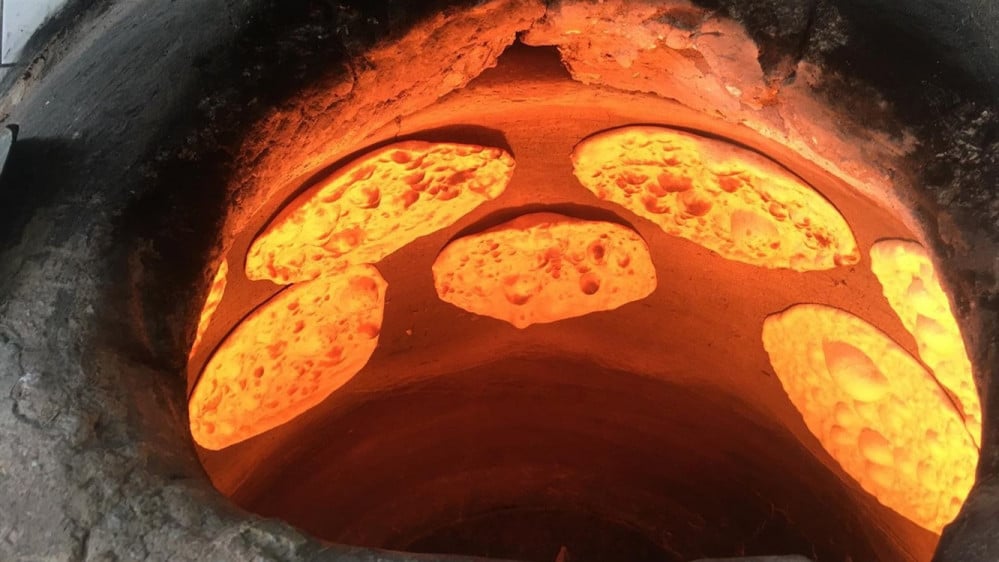enlightenment
A type of clay oven in which it is baked.
The tandoor is made from free clay, i.e., clay. The clay is prepared, mixed well, and fermented. From this clay, rings are made with a diameter of about 1 meter, a height of about 20 cm, and a thickness of about 3 cm. They are left to dry. These rings are made in numbers and diameters that together form a tandoor, which has a total height of 1 - 1.5 meters, where these rings are installed on top of each other to form the final form of the tandoor and are left to dry under the sun.
The sizes of the tandoor oven vary. The large one is for commercial production purposes, and the small one is for domestic purposes.
This tandoor is installed in one of the corners of the place, or the skirts are lined up next to each other to form a row of them, as is the case in bakeries.
Wood from trees, date kernels, or even oil burners are used by compressing the oil into the hearth to heat the tandoor and bring it to the temperature needed for baking.
In recent years, the metal oven that works on gas has invaded homes because it is more practical for the mother of the house than the clay oven, as it can be moved easily, unlike the fixed clay oven.
The earliest examples of the tandoor oven are found in settlements from the ancient civilization of the Indus Valley in Pakistan , though earlier tandoor-type ovens have been recovered in early Harappan contexts on the Makran coast, including the hill site of Balakot, Pakistan. In Sanskrit, it is referred to as tandoor kandu. The word tandoor comes from the Dari word tandūr and tannūr; Derived from these very similar terms, viz. Persian tanūr (tannur), Armenian "t'onir" (Թոնիր), Arabic tannūr (tannur), Azeri Turkish Tandır and Kurdish təndir tendûr (which all have the same meaning as described in the article). However, according to Dehkhoda Persian Language Dictionary the word originates from Akkadian tinûru, and is mentioned as early as in the Akkadian epic of Gilgames (reflexed as Avestan skirt and tanûr Pahlavi). As such, it may not have originated from a wholly Semitic or Iranian tandoor, which dates to the pre-migratory periods of the Aryan and Semitic peoples of Mesopotamia and the Iranian plateau.
Many meals are prepared in the tandoor oven, the most famous of which are: tandoori chicken and chicken tikka .
Tawabin : singularly taboon, which is an open-ceilinged earthen mold designed by Jordanian and Palestinian farmers to make bread from calcareous soil after mixing it with hay and water and exposing it to the sun until it dries, then it is buried after that with ashes and dry animal dung (manure) after covering the taboon with a special iron cover Inside it, smooth rounded stones called al-radfa or al-radfa are placed, and a fire is lit on it until it becomes a sufficient temperature for the ripening of the dough. This temperature must be maintained continuously by adding (manure) daily to the taboon. dry in dung for half a day until it turns into flaming coal, then they take it out of the ashes of dung and put it in a cannon .

